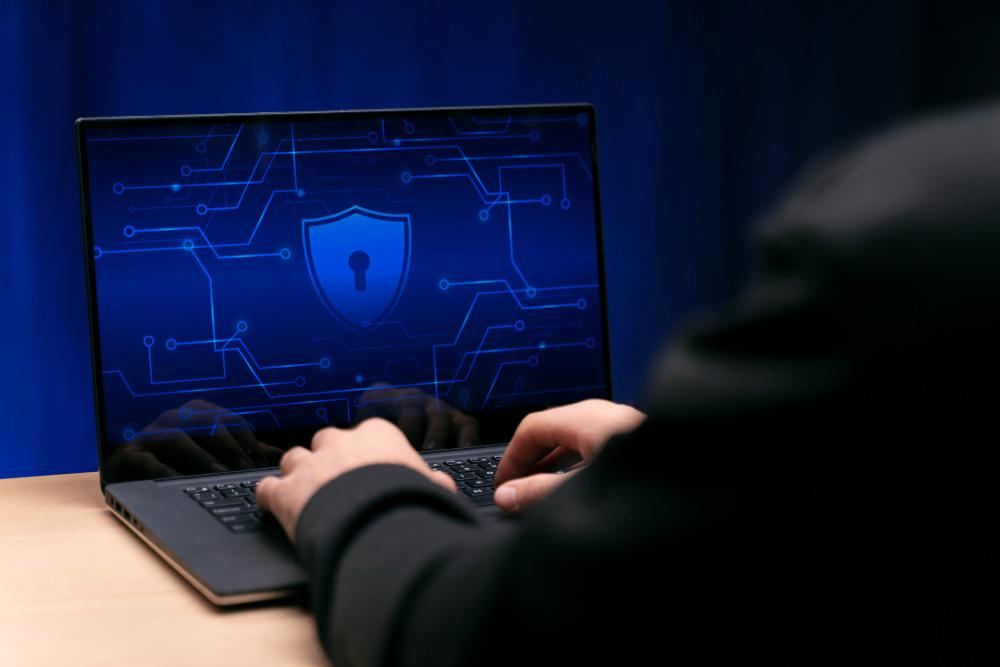Pe32s is a highly destructive piece of ransomware that encrypts victims’ files and demands a ransom in exchange for decryption. Like many ransomware variants, Pe32s not only locks data but also threatens to leak stolen information if payment is not made.
Once it infects a system, Pe32s modifies file names in a specific format:
“[original_filename].[victim_ID].[format].pe32s”
For example, a file named 1.jpg is renamed to [1].[9069CF22962069EF].[jpg].pe32s.
After encrypting files, the ransomware drops a ransom note titled README.txt, which contains instructions for the victim to contact the attackers via Telegram or email to negotiate the ransom payment.
Pe32s is a severe threat, often targeting businesses and organizations, with ransom demands reaching hundreds of thousands of dollars. However, paying the ransom does not guarantee decryption, as cybercriminals frequently fail to provide decryption tools even after payment.
Pe32s Ransomware Summary
| Threat Name | Pe32s Virus |
|---|---|
| Threat Type | Ransomware, Crypto Virus, File Locker |
| Encrypted File Extension | .pe32s |
| Ransom Note File Name | README.txt |
| Ransom Amount | Three to six digits in USD, paid in Bitcoin |
| Cyber Criminal Contact | @decryptorsupport (Telegram), bettercallarmin1@gmail.com |
| Detection Names | Avast (Win64:MalwareX-gen [Trj]), Combo Cleaner (Gen:Variant.Tedy.711790), ESET-NOD32 (A Variant Of Win64/Filecoder.SW), Kaspersky (Trojan-Ransom.Win64.Agent.dxc), Microsoft (Trojan:Win32/Wacatac.B!ml) |
| Symptoms of Infection | – Files cannot be opened – Files renamed with a .pe32s extension– A ransom demand appears – Unusual system behavior (slow performance, disabled security software) |
| Damage | – Encryption of all stored data – Potential data theft and exposure – Additional malware infections – Financial loss if ransom is paid |
| Distribution Methods | – Malicious email attachments – Fake software updates – Drive-by downloads – Torrent websites – Infected USB drives |
| Danger Level | Critical – High risk of data loss and financial harm |

Remove
Pe32s Ransomware
With SpyHunter
Download SpyHunter now, and scan your computer for this and other cybersecurity threats for free!
Ransom Note Contents
Upon infecting a system, Pe32s ransomware drops a ransom note named README.txt in affected directories. The message reads:
Your files have been encrypted with strong encryption algorithms.
Your sensitive data has been exfiltrated and is in our possession.
To restore your files and prevent your data from being leaked, you must pay a ransom.
Contact us:
Telegram: @decryptorsupport
Email: bettercallarmin1@gmail.com
We allow you to test decryption on a few small files (less than 2MB, not valuable).
Payment must be made in Bitcoin. The amount depends on your organization's size and the number of infected machines.
DO NOT attempt to decrypt files yourself. You will lose them permanently.
DO NOT contact law enforcement. We will publish your data if you do.This note serves as both a ransom demand and a psychological tactic to pressure victims into compliance.
How Pe32s Ransomware Infects Systems
Pe32s ransomware primarily spreads through:
- Phishing Emails – Malicious attachments (Word, PDF, or ZIP files) containing macro scripts that execute the ransomware upon opening.
- Fake Software Updates – Bogus update notifications that trick users into downloading the ransomware.
- Compromised Websites & Malvertising – Clicking on malicious ads or visiting compromised sites may trigger drive-by downloads.
- Torrent and Illegal Software – Downloading pirated content often carries embedded malware.
- Trojan Downloaders – Other malware already present on the system may download and install Pe32s.
How to Remove Pe32s Ransomware

Remove
Pe32s Ransomware
With SpyHunter
Download SpyHunter now, and scan your computer for this and other cybersecurity threats for free!
Step 1: Boot in Safe Mode with Networking
- Restart your computer and press
F8(orShift + Restartin Windows 10/11). - Select Safe Mode with Networking.
- Log in and proceed with malware removal.
Step 2: Use SpyHunter to Remove Pe32s
Since manual removal is complex and risky, using SpyHunter is highly recommended.
- Download SpyHunter.
- Install and launch the application.
- Perform a full system scan to detect Pe32s ransomware.
- Remove all detected threats.
- Restart your computer to complete the process.
Step 3: Remove Pe32s Ransomware Manually
(For advanced users)
- Open Task Manager (
Ctrl + Shift + Esc). - Locate suspicious processes related to Pe32s, right-click, and select End Task.
- Navigate to
C:\Users\[YourUsername]\AppData\Localand delete suspicious folders. - Delete ransom note files (
README.txt). - Open Registry Editor (
Win + R, typeregedit) and remove suspicious entries in:HKEY_LOCAL_MACHINE\SOFTWARE\Microsoft\Windows\CurrentVersion\RunHKEY_CURRENT_USER\Software\Microsoft\Windows\CurrentVersion\Run
Step 4: Restore Encrypted Files
- If you have backups, restore your files after completely removing Pe32s.
- If no backup is available, try:
- Shadow Copies Restoration (
Windows + R, typerstrui, and follow the restore process). - Data Recovery Software (Recuva, EaseUS, etc.).
How to Prevent Future Ransomware Attacks
- Backup Your Data: Regularly save important files to an external drive or cloud storage.
- Avoid Suspicious Emails: Do not open attachments or links from unknown senders.
- Keep Software Updated: Ensure Windows, antivirus software, and applications are up to date.
- Use Strong Security Software: Install SpyHunter or another reputable anti-malware tool.
- Disable Macros in Office Documents: Malware often exploits macros to execute ransomware.
- Avoid Pirated Software: Download applications only from official websites.
- Use a Firewall & Secure Network: Enable Windows Defender Firewall and avoid using public Wi-Fi.
- Monitor System Activity: Regularly check for unauthorized processes and software.
Conclusion
Pe32s ransomware is a severe cyber threat capable of encrypting files and extorting victims for ransom. While it is possible to remove the malware using SpyHunter, data recovery without a backup remains difficult. Prevention is key—implementing robust cybersecurity practices will significantly reduce the risk of ransomware infections.

Remove
Pe32s Ransomware
With SpyHunter
Download SpyHunter now, and scan your computer for this and other cybersecurity threats for free!





